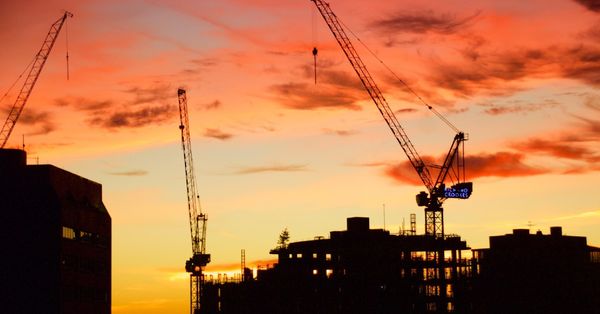
Reporter: Well, we have a call this morning that we’re at peak construction. A report from ANZ shows both residential and commercial building work has been on the decline for the last two quarters.
So at a time when we need new houses like never before, is this a worry?
And Professor of Construction Management at AUT, John Tookey, is with me. And, John, good morning to you, and thank you.
Full Audio Interview (transcription below):
John Tookey: Good morning. And how are you?
Reporter: Very well. What, in your view, is going on here?
John Tookey: Basically, the ability of the construction industry to scale up is limited. We have a finite capacity of skilled labour. We’re building things pretty much as we’ve always built things.
So technically, we’re never improving in terms of our productivity, and the costs go up and productivity doesn’t improve, and yeah, we’re in a bit of a mess.
Reporter: And how concerning then– we’re in a mess, how concerning is this going forward?
John Tookey: Well, it’s substantial, particularly when politicians are promising X number of new houses, whatever it may be. We are actually not– we’re failing quite significantly to deliver on the aspirations for, what was it, 14,000 homes per year.
We’re actually at about 7,000. We’ve been ramping up for years and we’re still failing to deliver on this.
Reporter: What needs to be done then to ramp it up?
John Tookey: Well, basically, the issue is capacity building.
So myself and colleagues around the country are working in what’s called National Science Challenge 11 trying to build better homes, towns, and cities, researching in that space, but there needs to be a commitment of actual capital for infrastructural growth.
We have to recognize the fact that we are in actually a crisis and we do need to actually invest in building our capacity to build more homes. I mean it’s just really that simple.
If we’re producing half as many homes as we need, we either have to double the total number of people in construction to building, or alternatively, we’ve got to double the productivity.
It’s one or the other or a mix of the two, and as it sounds at the moment, we’re messing around at the edges, and really the game-changing technology is going to be ultimately probably prefabrication of some description to increase the productivity that we need to deliver on the infrastructural aspiration for the nation.
Reporter: Right. So how far are the prefab ideas, the factories pumping out these houses, how far are we away from that concept? I know Fletcher’s have been trialling it.
John Tookey: Yes, and Mike Grier down in Christchurch has also been extensively using that. It literally comes down to the fact that we need to incentivise its utilization. At the moment, you don’t get any brownie points for trying to build a prefabricated home.
A lot of subdivisions, they look down upon prefabricated homes and you’re actually constrained in the use of prefabrication techniques and everything gets built in the traditional manner.
As a result, everything stays the same. If you always do what you’ve always done, you get what you’ve always got with no change.
Reporter: Yeah. And yet this works overseas, doesn’t it? Prefabs, Germany’s an example, and their homes are fabulous that they are pumping out from factories.
John Tookey: Absolutely. I mean what we have is we have this aspirational thing of multiple toilets and en suites and what have you. We have very, very large houses.
The economics of constructing houses are such that actually, the per square metre cost of building a 250 square metre home is significantly less than the per square metre cost of building a 150 square metre home, just because of the nature of from a technical perspective how we build homes.

So what we end up doing is we, in effect, create the conditions whereby builders are always going to be building bigger and bigger and bigger homes, maximising the size of a house on a small section, in order to lock in maximum residual value. It’s a bit of a shock, but actually, the market will act as the market, builders will try and make a profit.
Reporter: Yeah. Yes. I understand. Christopher Luxon, CEO of Air New Zealand, John, said last week, I thought it was interesting, he said we need a vision and we should be– or could be, not should be, but could be, partnering with the likes of Chinese companies, partnering to come in and build houses. What do you make of that idea?
John Tookey: Is it a possibility? Absolutely. The issues of mobilising to New Zealand are always very difficult. We’re a very small market. We’ve very rapidly maxed out our total demand.
Having spent millions of dollars mobilising to New Zealand, all of the sudden, you build yourself out of making money very, very quickly, and so it’s back to square one. And to be fair, historically we’ve used prefabrication in the past.
It’s not that transformational in the sense of it’s like new sliced bread or something. We’ve been doing this for a long period of time in the past. It’s just that we went away from that.
Now we need to go back to it, and we need to actual incentivise its use, and if need be, compel its use. I mean it’s just if we have a social need, there’s a requirement to deliver on this, then we actually have to start saying how we’re going to do that.
Reporter: Interesting. Thank you very much. That is John Tookey, who is Professor of Construction Management at AUT.
Source: Newstalk ZB
P.S. Do you know of other people that will find this article useful? Please share it on social media. Thank you!